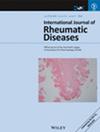Exploring the Factors Associated With the Discontinuation of Tofacitinib in Patients With Rheumatoid Arthritis: A Retrospective Cohort Study
Abstract
Objectives
Tofacitinib is the first oral targeted synthetic disease-modify anti-rheumatic drug for patients with moderate to severe rheumatoid arthritis. This study aimed to identify the factors associated with the discontinuation of tofacitinib in patients with RA in clinical practice.
Methods
RA patients who received tofacitinib between 2015 and 2020 were included in this observational cohort study. The patients were followed for at least 1 year, ending on December 31, 2022. A tofacitinib non-responder was defined as a patient who required discontinuation or switch to another bDMARD. Conversely, tofacitinib responders were defined as those who could continue to receive tofacitinib without experiencing a loss of efficacy or severe adverse events. Univariate and multivariate Cox regression analyses and Kaplan–Meier survival curve analysis were used to investigate the factors associated with the discontinuation of tofacitinib.
Results
A total of 266 patients were enrolled. The average age of the patients was 57.07 ± 12.07 years, and 99 (37.2%) were tofacitinib non-responders. Univariate analysis revealed that the non-responders had a lower rate of concomitant hydroxychloroquine treatment and higher rates of leflunomide, biological disease-modifying antirheumatic drug (bDMARD), and tumor necrosis factor inhibitor (TNFi) treatment compared to the responders. Cox regression adjusted analysis indicated that prior bDMARD treatment (hazard ratio (HR) = 1.423, 95% confidence interval (CI) = 1.024, 1.976, p = 0.036), prior TNFi treatment (HR = 1.605, 95% CI = 1.165, 2.212, p = 0.004), and prior non-TNFi treatment (HR = 1.326, 95% CI = 1.012, 2.075, p = 0.048) were associated with a higher non-response rate. Moreover, Kaplan–Meier survival curve analysis revealed that the patients with prior bDMARD treatment had a higher non-response rate.
Conclusions
The RA patients who received tofacitinib in this study had a good response rate, and the average non-response rate was around 37% after 2 years of treatment. The main factor associated with an inadequate response to tofacitinib was prior bDMARD treatment. Prior TNFi treatment was the strongest factor associated with a non-response to tofacitinib. Patients with a non-response to tofacitinib may consider bDMARDs with other mechanisms if previous treatment with TNFis was unsuccessful.

 求助内容:
求助内容: 应助结果提醒方式:
应助结果提醒方式:


